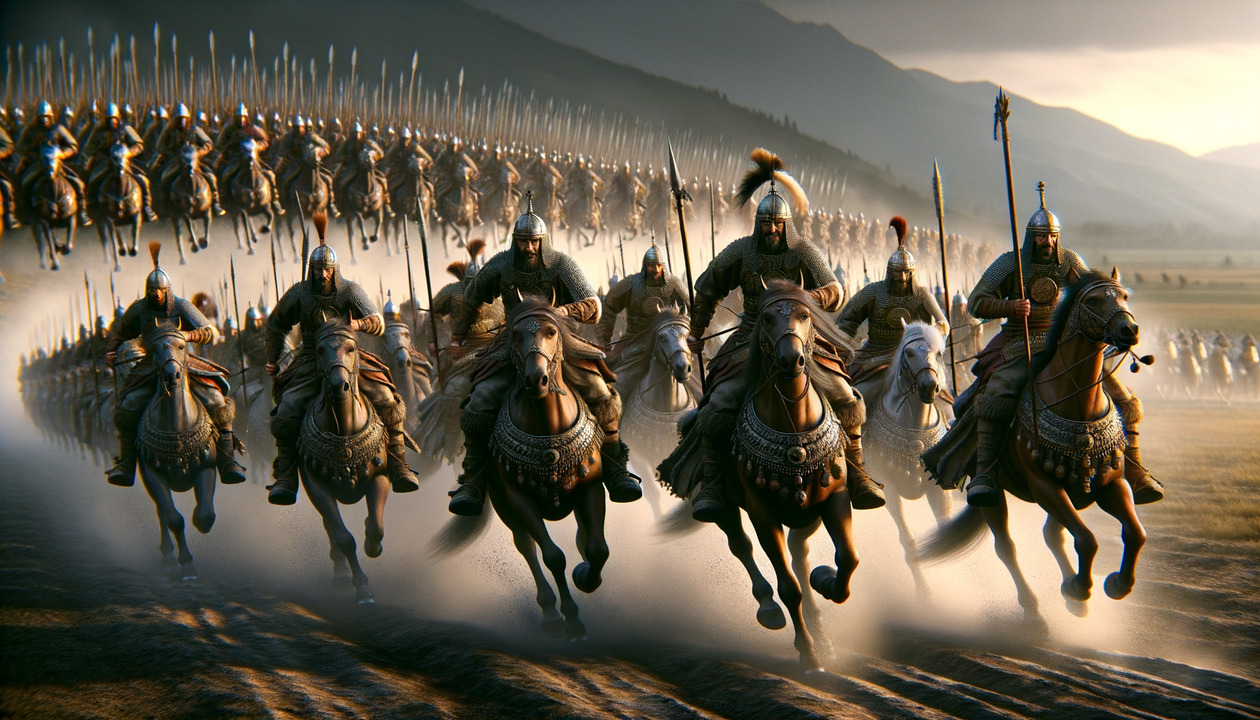
Promotion of Military Tactics
Attila's use of cavalry and military strategies had a profound impact on European warfare. His tactics influenced military doctrines and practices in subsequent generations.
Attila the Hun's Military Tactics: Revolutionizing European Warfare
Attila the Hun, often remembered as the "Scourge of God," was not merely a formidable conqueror but also a military innovator whose tactics reverberated through the annals of history. His strategic mastery, especially in the use of cavalry, reshaped the landscape of European warfare and left an indelible mark on military doctrines for generations to come.
Master of Mobility: Cavalry as a Force Multiplier
At the heart of Attila's military prowess was his adept use of cavalry. In an era where many armies still relied heavily on infantry, Attila's emphasis on rapid and highly mobile cavalry units gave him a significant advantage. The Hunnic cavalry, known for their speed and agility, allowed Attila to execute swift raids and retreats, confounding the often slow and cumbersome Roman legions.
The Hunnic horsemen were not only mobile but also versatile. Capable of executing complex maneuvers, these riders could attack quickly and retreat before the enemy had a chance to respond effectively. This mobility was a crucial element in the Huns' ability to appear unexpectedly, strike hard, and vanish, instilling fear and chaos among their adversaries.
Psychological Warfare: Intimidation and Surprise
Attila's mastery went beyond mere cavalry tactics; he was an early practitioner of psychological warfare. Using fear as a weapon, Attila's forces employed surprise attacks and spread rumors of their ferocity, disrupting the morale and organization of opposing forces long before battle was joined.
The Huns were reputed for their terrifying battle cries and unique, otherworldly appearance on the battlefield, adorned in furs and helmets that gleamed in the sunlight, crafting an image designed as much to terrify as to subdue. The dread of facing Attila’s army often proved as debilitating as the physical confrontation, breaking enemy lines before the first arrow was released.
Strategic Alliances and Deception
Attila was also a master strategist off the battlefield. He forged and broke alliances with deft timing, often pitting his enemies against each other to weaken their resolve before swooping in for the conquest. His understanding of political dynamics allowed him to leverage disputes among Roman factions, manipulating them to his advantage.
Deception played a major role in Attila's strategy. By feigning retreats or concealing his true numbers, Attila often lured enemies into traps, turning engagements to his favor. His ability to adapt and respond to battlefield conditions with cunning and flexibility became a model studied by military leaders in the succeeding centuries.
Legacy and Influence on Military Doctrine
Attila's military tactics, especially his proficient use of cavalry, set a precedent that deeply influenced military doctrine well beyond his time. His strategies resonated with later cavalry-centric campaigns, extending into the medieval period and shaping the tactics of both European and Asian warfare.
Military leaders in the centuries following Attila took note of his successes and adapted his principles to their own strategies. The emphasis on mobility, surprise, and psychological manipulation became tenets of warfare employed by generals seeking to emulate Attila's exploits.
In conclusion, Attila the Hun’s military strategies were not only effective in his lifetime, leading to numerous victories and an enduring legacy as one of history's great commanders, but they also paved the way for future innovations in military tactics. His sophisticated use of cavalry and psychological warfare indeed transformed European battlefields, leaving an imprint that resonates in military practices to this day. The study of his methods continues to fascinate historians and military strategists alike, cementing his place as a pivotal figure in the evolution of warfare.